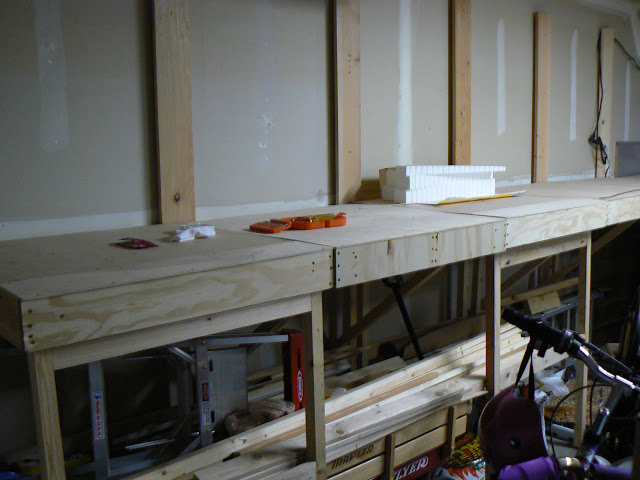The discovery was that the foam pieces on Module 2 were not as level as I had originally thought. There was a slight dip from the main section to the extension. Of course, I had to fix that. So I took out my Mold-a-Scene and mixed up a small batch and troweled it onto the uneven surface. It was really crumbly, even after I added a tablespoon or so of extra water. After working with it for a while I got it into the shape that I needed.
You can see some of the Mold-a-Scene under the base of the model after I sanded it down.
One thing I learned about Mold-a-Scene (that even my guys at the hobby shop couldn't be sure of) is that it will adhere to foam. But it takes a long time to dry. Five days. Of course I'm building this in my garage and it's winter and it's the Northwest so it is cold and damp. But 5 days? Well, at least it dried and it sanded well.
Then the crazy idea hit. Feed mills like this take delivery from bulk carriers, like a car-load of corn or something like that. Then the corn is taken by the feed mill and ground and bagged. So how do they get that corn or whatever? Hoppers pull up and dump their load into a trough, which leads to the mill underground.
You can see the trough being cut out of the foam. I used a small, flat-bladed wood cutting knife I had, taped up at a place above the point of the knife so that each incision I made would be the same depth.
I'm sure there's a company out there that makes a trough that I could use but I didn't want to go looking for it. I wanted it right now. So I built one on my own using plastic dock parts from Walther's foundation and loading dock parts kit. The difficult part was cutting the narrow sides to the right length. It seemed that in the prototype the rails would need to sit on the long edges of the trough in order to support the rails. And as we know prototypical rails are 4-feet-eight-inches apart. That's fairly narrow in N Scale.
You can see the the finished unpainted model in the photo above and below.
There's more to do on the trough ....

